Now that Field Day is right around the corner, we thought it was finally time to publish this blog post detailing our spring cabin trip that happened back in February.
Back in February, we organized a spring cabin trip for our new members to try and match the welcome that joining in the fall gets with Field Day. We booked a cabin about an hour’s drive south of Trondheim, Ellingsvatnet, with great outdoor opportunities for skiers and walkers. Fifteen people signed up for the trip, with a healthy mix of brand-new members and a few old-timers as well.
For this trip, we planned an extensive competition to introduce and teach everyone a few things about amateur radio and, of course, to keep us all busy for the weekend. The plan was to split into three teams on Saturday, each with their own portable shack, and try to get as many QSOs as possible within a time frame.
The groups naturally formed with one group wanting to go skiing, one group wanting to go on foot, and one group deciding to kill two birds with one stone and ascend a nearby SOTA summit, LA/ST-190 Melberget, during the competition.

Photo: LB5PI
Before we set out on our quests, there was the issue of dividing up the equipment and resources. We decided to divide everything into six different categories. The teams would then have to compete in various games for the chance to choose first in that specific category. Who knew your Skip-Bo skills would be critical for the next day’s events?
| Callsign | Radio | ATU | Antenna | Mast | Battery |
|---|---|---|---|---|---|
| LA100K/P | FT-891 | MFJ | 2 x 20m vertical | Fishing pole 6m | 1x LiFePo4 |
| LA1K/P | FT-857D | Heathkit | 20m vertical | Spiderbeam 12m | 1x LiFePo4 |
| LA1ARK/P | FT-450D | LDG | 40m vertical | Fishing pole 6m | 3x Li-Po |
From the table, it is evident that some categories mattered more than others. And it was also important to get the right combination of equipment. For instance, there’s no point in getting a 40m vertical if you only have a 6m mast.
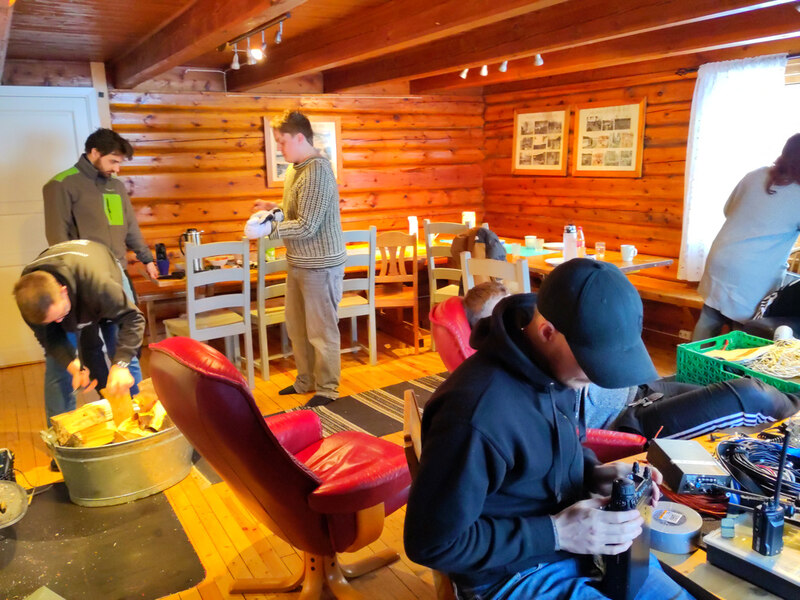
Photo: LB5DH
After everyone arrived on Friday night, we served tacos and started the competition. As is traditional on Norwegian cabin trips, the games to compete for equipment were board and card games.
Team 1, the walking team, with callsign LA1ARK/P, consisted of LB0VG as the team leader, brand new member Amanda, LB7JJ (then only Alexander), and Tàri. They got to choose their radio first and went with the FT-450D, along with the LDG automatic tuner, the 3 Li-Po batteries, and a 40m vertical antenna with the 6m fishing pole. Sacrifices had to be made, and the team cut off the banana plugs on the vertical to be able to fit it into their tuner.
Team 2, the skiing team, consisted of LB9WI as the team leader, LB5PI, LB8LI, SP5SBU, Emil, and LA1Q (then only Axel). They chose their radio last and got stuck with the FT-857D (nothing wrong with the radio, but none of the team members were familiar with it), the Heathkit tuner, a 20m vertical, the 12m fiberglass mast, and one LiFePo4 battery. Thanks to LB5PI’s skills in UNO, they got to choose callsigns first and went with LA1K/P.
Team 3, the SOTA team, had LB5DH as the team leader, along with LB5FJ, Harald, and Randi. They got the FT-891 radio, a 20m vertical antenna, and a 20m dipole with the other 6m fishing pole and were left with the MFJ tuner, plus the remaining LiFePo4 battery. This loss in the game of Set would lead to many hours of hair-pulling the next day. The team got our special centennial callsign, LA100K/P.

Photo: LB5DH
On Saturday, the rules were simple. The teams could start anytime they wanted, but they had to be back for dinner at 18:00. First out was the SOTA team. They drove 15 min to a nearby farm and started their ascent. The snow turned out to be relatively deep, but the tracks were solid.
Meanwhile, the walking group had left and started the 45-minute walk towards their soon-to-be QTH. While they were walking, the ski group was getting ready to leave but faced an unanticipated problem. Although a snowy forest surrounded the cabin, they had trouble finding a route that actually led anywhere. They drove around for a while before finally finding a ski path that was a 5-minute drive from the cabin.

Photo: LB5DH
While the ski team was finally ready to put on their skis and start, the SOTA team had already reached the top of their summit and was preparing the QTH. They decided to set up the antenna in a marsh next to a hilltop cabin and mix things up a bit with a vertical dipole. They spent about an hour having trouble setting up the vertical dipole due to not bothering to read the tuner manual. In the end, they went with the 20m vertical.
While the SOTA team struggled with their vertical dipole, the walking team faced a different issue. They had ended up with a 40m vertical and only a 6m long fishing pole. LB0VG knows how to think on his feet and just folded the wire antenna in half, creating a 20m vertical. They were QRV at approximately 14:00, with the ski team following closely after at 14:14. Due to the SOTA team’s issues with the vertical dipole, they lagged behind and got their first QSO at 15:26.

Photo: LB5DH
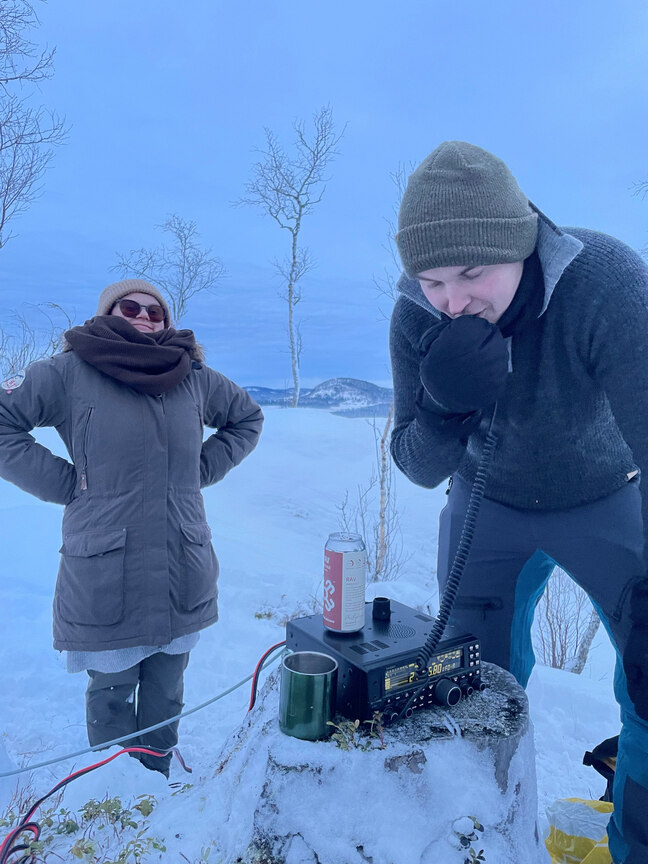
Phtoto: LB0VG
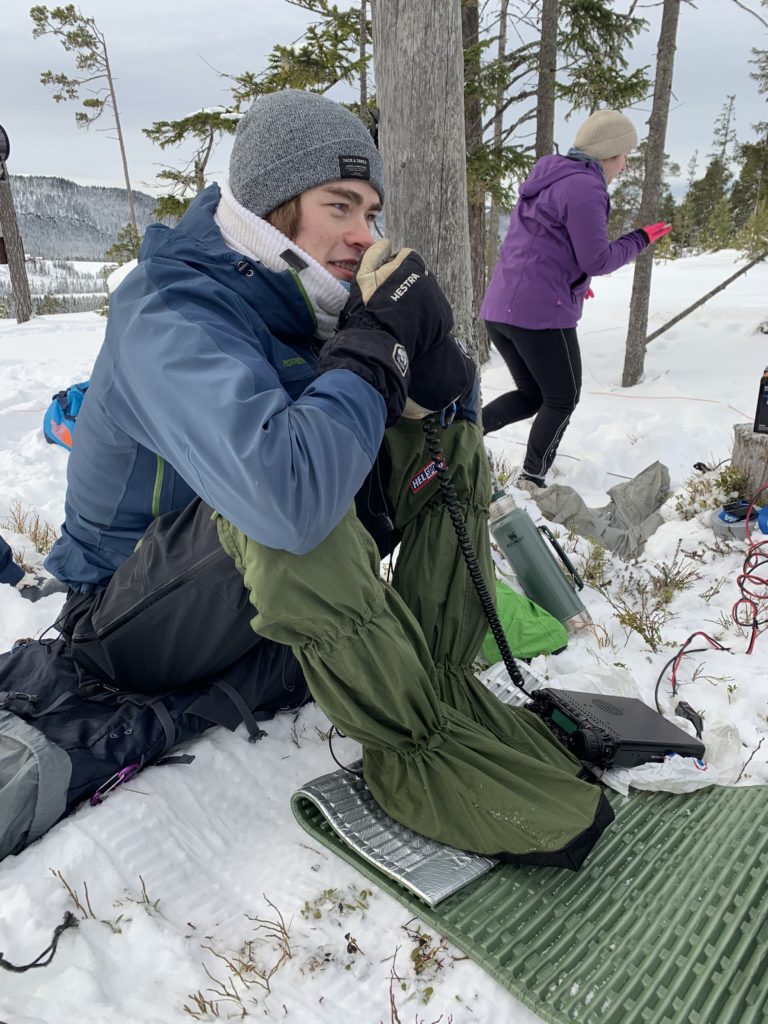
Photo: LB8LI
When all the teams were QRV, the QSO count slowly and steadily increased for all teams. The teams got double points for unlicensed operators. The walking team’s leader, LB0VG had the most unlicensed operators on his team yet found them to be hesitant to take the microphone. He finally announced that they would not go home until everyone got a QSO, which greatly helped.
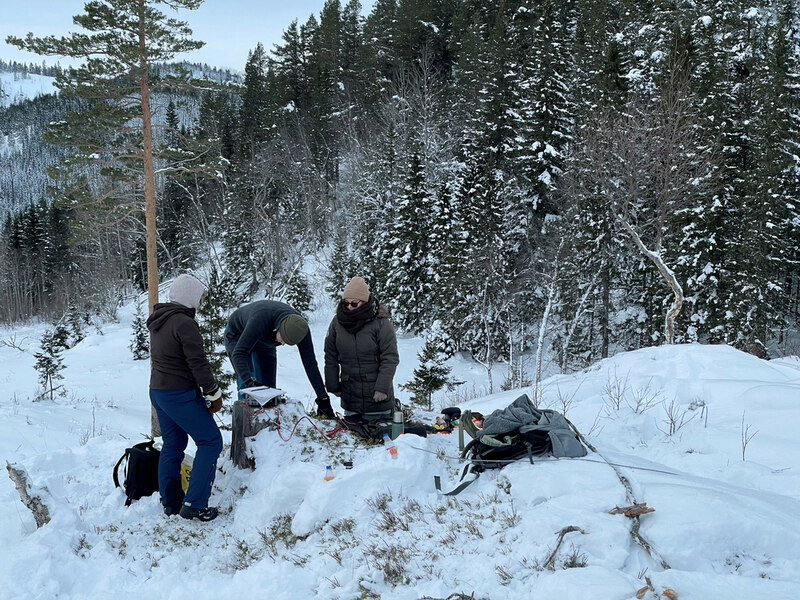
Photo: LB0VG
Up on the summit, LB5FJ finally got his first-ever SOTA activation around 15 minutes after going QRV. The ski team was also able to convince Emil and Axel to get some QSO’s and Emil even got a QSO with the walking team. To meet the deadline, the teams all started their descent at around the same time, with the last group leaving at 17:00 to walk the 45 minutes home.
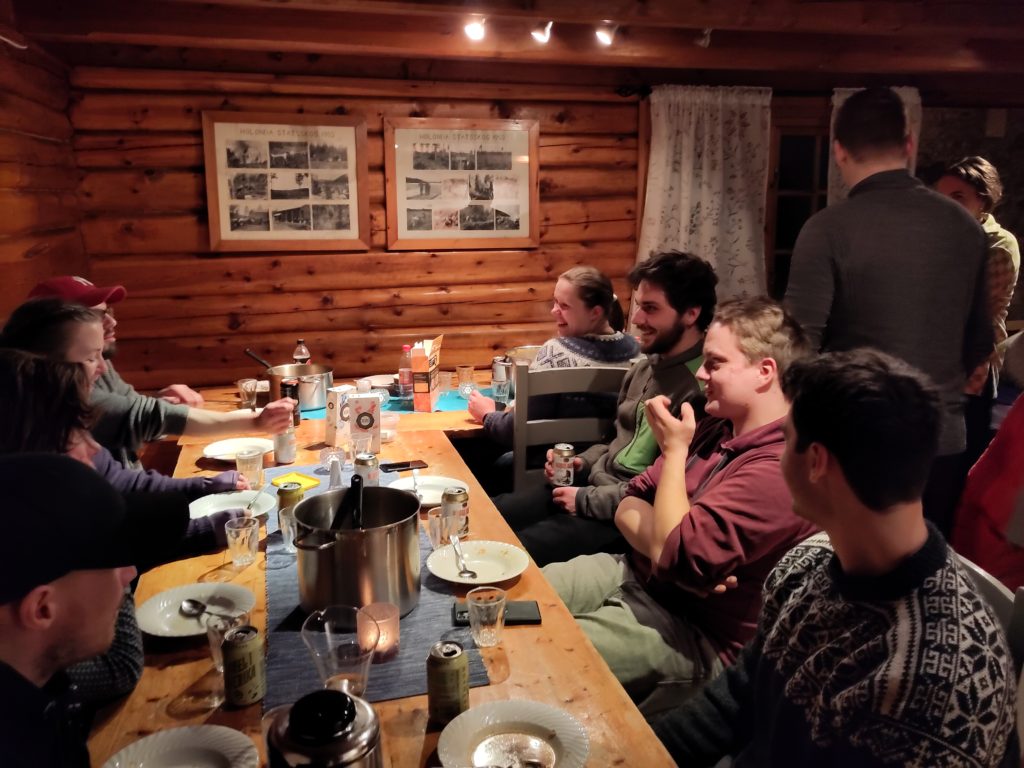
Photo: LB5DH
We had sodd, a local delicacy for dinner, and after dinner, we started tallying up all the points. The teams got 1 point for every QSO from a licensed operator and 2 points for every QSO from an unlicensed operator. There was a bit of a disagreement on whether the SOTA QSOs from team 3 that they had gotten with their private callsigns should count. In the end, we concluded that they did not.
The final tally was 76 points to the SOTA team, 98 to the skiing team, and 102 to the walking team, who came away with a victory!
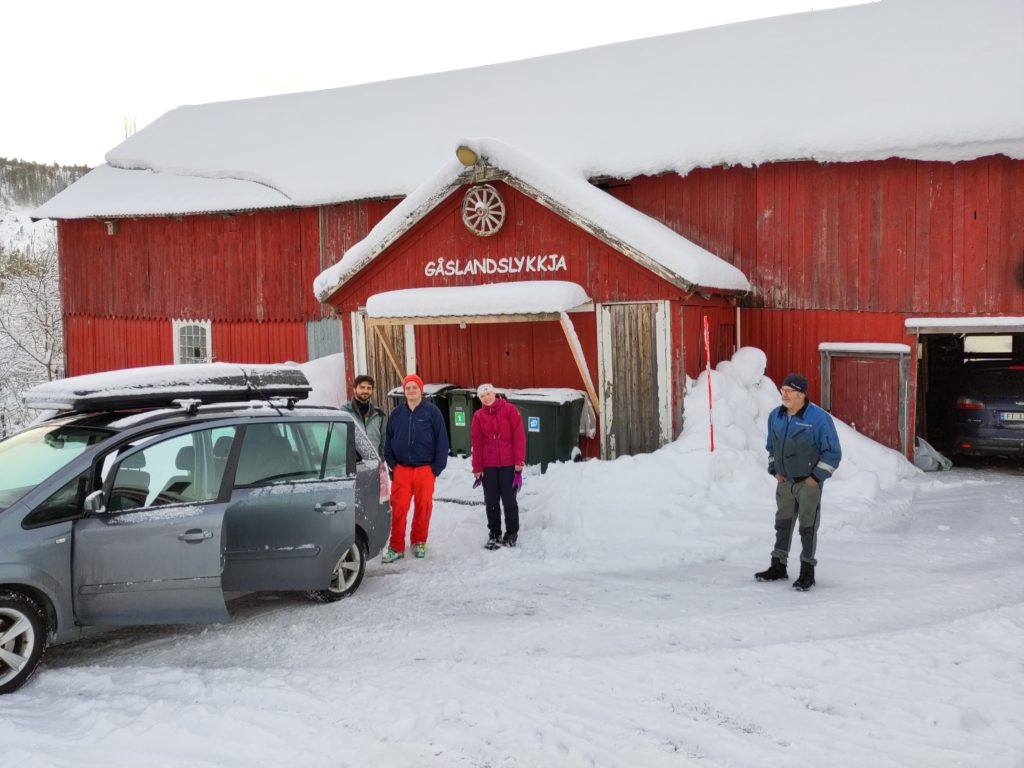
Photo: LB5DH
On the final day, some of the SOTA team members wanted to go to another nearby summit, LA-ST/194 Langåsåsen. A couple of others went for a quick ski trip on the ski path we had found the day before. And the rest just hung out at the cabin. LB0VG improvised an 80m vertical antenna so everyone at the cabin got to check in to QST-LA.
After the SOTA expeditioners returned, we cleaned up the cabin and left at around 15:00 that day after a quick jumpstart to get LB8LI’s car going. Thank you to everyone for joining this fun cabin trip, and we hope to do it again next year!
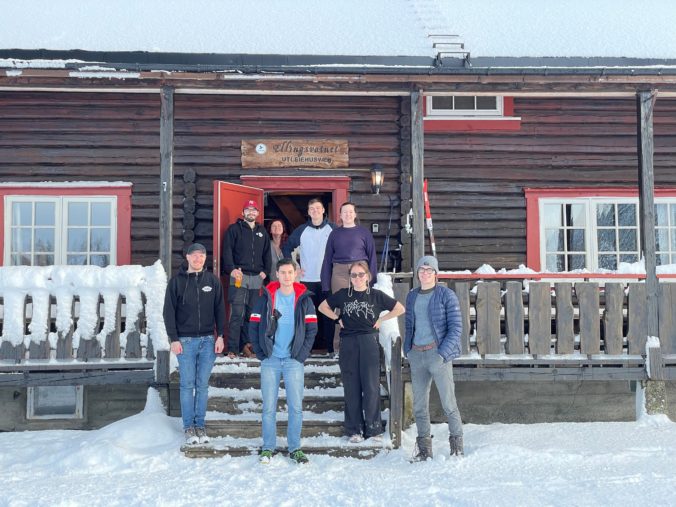

Leave a Reply